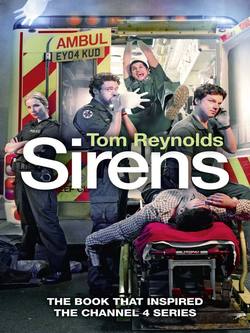Читать книгу The Complete Blood, Sweat and Tea - Tom Reynolds - Страница 7
Prologue: Too Young
ОглавлениеYesterday started well, we had the only new ‘yellow’ vehicle on the complex, and it really is an improvement on the old motors. But then we got a job that should have been routine, but unfortunately was not.
We were given a ‘34-year-old male, seizure’ at a nearby football pitch in the middle of a park. Also leaving from our station was the FRU (a fast car designed to get to a scene before the ambulance). As we had a new motor, we were able to keep up with the FRU.
Arriving at the top of the street, we were met and directed by some of the patient’s football team-mates. Unfortunately, the patient was 200 yards into the park, and there was no way we were going to get the ambulance onto the field – the council had built a little moat around the park to stop joyriders tearing up the grass in their stolen cars.
The FRU paramedic had reached the patient first and I ran across the field to get to the patient as the paramedic looked worried, and this isn’t someone who normally worries.
As I reached the patient, carrying the scoop which we would use to move him, the paramedic asked me if I thought the patient was breathing.
The patient was Nigerian, and it is not racist to say that sometimes detecting signs of life on a black person is harder than if the patient is Caucasian. White people tend to look dead; black people often just look unconscious. Also, a windy playing field at dusk is not the ideal circumstance to assess a patient.
‘He’s not breathing,’ I told the paramedic, just as my crewmate reached us. ‘Shit’ replied the paramedic, ‘I left the FR2* in my car’.
I had to run 200 yards back to our ambulance to get this, now vital, piece of kit.
On my return my colleagues had started to ‘bag’ the patient (this means using equipment to ‘breathe for’ the patient and performing cardiopulmonary resuscitation, or CPR), which is the procedure to keep blood flowing around the body in the absence of a pulse. Attaching the defib pads I saw that the patient was in ‘fine VF’ (ventricular fibrillation) – this is a heart rhythm which means the heart is ‘quivering’ rather than pumping blood around the body to the brain and other vital organs. Technically, the patient is dead and without immediate treatment, they will remain dead.
We ‘shocked’ the patient once and his heart rhythm changed. It changed to asystole (this means that the heart is not moving at all, and it is much more difficult to restore life to the patient with this form of rhythm). We decided to ‘scoop and run’ to the nearest hospital. The paramedic secured the patient’s airway by passing a tube down the windpipe, and we got the patient onto the scoop, all the time continuing the CPR and giving potentially lifesaving drugs. We then carried him, with the help of his team-mates, to the ambulance and rushed him to hospital.
Unfortunately, the patient never regained consciousness, and died in the resuscitation room.
Thirty-four years old, normally fit and healthy – and he drops dead on a football pitch. Despite our best efforts there was nothing more we could have done for him; the treatment went according to plan and the resuscitation attempt went smoothly. This was a ‘proper’ job, but one job we would have happily done without.
